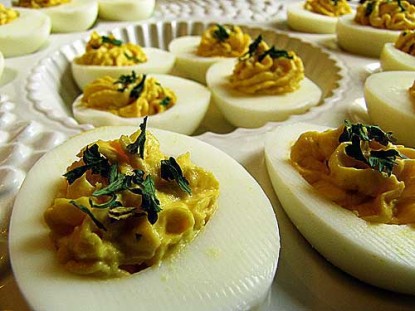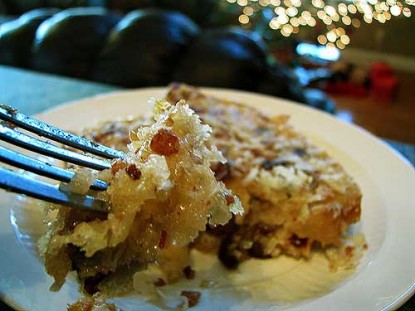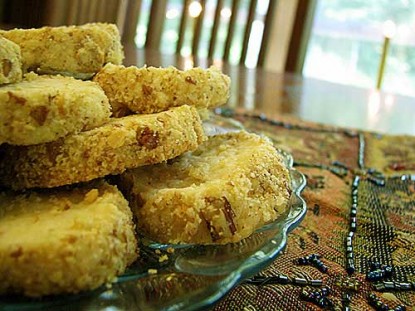Food Bokeh
Posted By Suzanne McMinn On June 25, 2010 @ 1:03 am In Blog,Food Photography | 9 Comments
The word ‘bokeh’ is very popular right now, so in this installment of my ongoing series in helping me–and you–take better photographs of food, I want to explain what that really means. Bokeh is a Japanese word for blur, but when it’s applied to photography, it doesn’t just mean any blur. It relates to the quality of blur, and good bokeh requires good light. That’s why most often you’ll see great examples of bokeh in nature photography.

Notice all the light back there. The shallow depth of field places the focus on the blossom and the butterfly, blurring a pattern of light in the background. (Circular patterns of light make the best bokeh.) This not only tells us what to look at, but makes what we’re looking at look better–which is why it’s a great way to photograph food!
To achieve bokeh you need to set a low aperture (f-stop) number and focus closely, from a short distance, on the food. You also need some form of light–natural, candlelight, or even indoor lighting, to provide the bokeh’s light source.
A shallow depth of field alone, creating a blurry background, is not the same thing as bokeh.

In this photo, above, the blurred background is NOT bokeh. There is no pattern of light. This is simply a shallow depth of field. Bokeh involves light, not just blur.
If you don’t know how to control the manual settings on your camera, you can achieve bokeh anyway! I’m going to demonstrate that by showing you a couple of photos in which I achieved “accidental bokeh” to prove it to you.
The bokeh here is achieved by focusing closely on the coconut toast with Christmas lights in the background.

The bokeh in this photo, below, is created by a close focus on the cheesecake cookies with natural light from a window beyond.

Notice how the narrow focus draws your eye to the food while the soft bokeh light in the background makes the food appear even tastier.
Remember that I had no idea what I was doing. These photos were taken using nothing more high-tech than the macro button. I’ve always found photos like this to be somewhat of a wonder, sort of magical. Now I know how and why they happen, so I can work on creating food bokeh on purpose! You can do it, too, even if you have no desire to use the manual settings on your camera. You can just set up the environment in which your camera can automatically achieve bokeh for you. Here’s how:
1. Get close to your food–using your zoom and macro button on Auto, or getting right up close with your super macro if you have that option. (On most cameras, you’ll find the macro and super macro as a “flower” button.)
2. Put some light in the picture! Use a window. Or set your food outside to capture natural light. Use candelight or Christmas lights. However you do it, get some light in the background to feed the bokeh! Bokeh can’t exist without light.
This will NOT result in bokeh in every instance, depending on other factors that will also guide your camera’s automatic setting selections in individual shots, but you can always set up the elements that can create bokeh (tight focus and background light) and try. It can happen!
If you’re not opposed to using your manual settings and you want to create bokeh deliberately (instead of chancing it on automatic), set a low aperture (f-stop) number for a shallow depth of field, adjusting other settings to compensate as needed, then follow steps 1 and 2 above.
Okay, go make some food bokeh this weekend! (If you post a food bokeh shot on one of the recipe galleries here, let me know so we can all go see!)
Interested in contributing a guest post to the Farm Bell blog? Read information here for Farm Bell blog submissions. Want to subscribe to the Farm Bell blog? Go here.
Article printed from Farm Bell Recipes: https://farmbellrecipes.com
URL to article: https://farmbellrecipes.com/food-bokeh/
Click here to print.